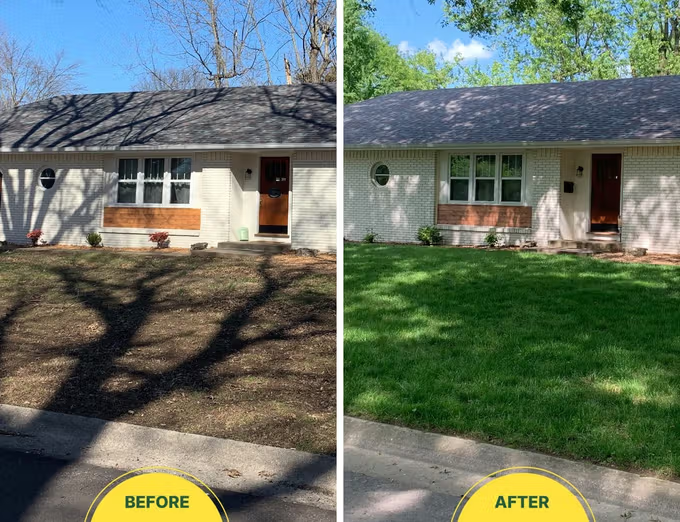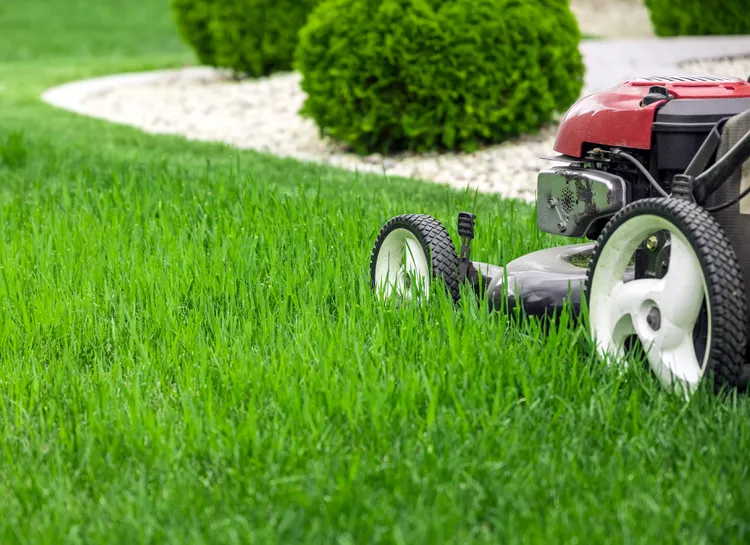6 Ways To Revive A Dead Lawn
Last Updated on May 18, 2020 by Duncan
Believe it. You can revive a dead lawn without having to remove the old one. Success at reviving the dead lawn depends on how long the grass has been dead.
Lawns that have been dead for short periods (3-5 weeks) can be regrown.
Do you have a dead or dying lawn? Here are some of the ways you can revive it:
Reviving a drought-stricken lawn
If you live in dry states such as California, most of the lawn deaths are due to drought and water restrictions.
Grass growing in hot areas goes to dormancy due to water scarcity.
When you water the lawn or lift the water rationing, the lawn will come back as long as it has been dead for 3-5 weeks.
The amount of water you have to apply to the lawn to revive it depends on the temperatures in the area.
If the temperatures have been too high, the rate of transpiration is high hence you need more water to keep the grass alive.
If your lawn looks brown all over, cut grass from a small area, and observe whether there are signs of green underneath.
Water the area a few days and closely monitor it.
If you see signs of life, continue watering for the next few weeks, and you will bring back the dead grass.
When the ground has been dry for several weeks, it’s common for the surface to be too dry. You may have to plug the lawn to allow water to get to the roots.
Give the lawn a few weeks for the grass to grow back.
As you are waiting for the dormant grass to grow back, broadcast ryegrass seeds in the lawn area. They will sprout fast and give your lawn a green look you want.
Reviving a lawn affected by thatch
A thick thatch prevents water and air from getting down to the roots of the grass.
When it’s raining consistently, and you are applying enough water, you don’t have lawn problems as the water is enough to seep through the grass.
When the water is limited, it simply wets the surface, and it doesn’t reach the grassroots.
To revive a lawn that has been affected by thatch, you need to find the thickness of the thatch. If it’s less than an inch, break up the thatch using a dethatching rake.
Pull the rake through the lawn in long strokes, pressing down firmly to as much thatch as possible.
If it’s thicker than this, use a mechanical or powdered de-thatcher.
After removing the thatch, water the lawn and feed it with nitrogen fertilizer. This is to speed up the re-growth.
Reviving a lawn damaged by grubs
Grubs, or immature chafer beetles feed on grassroots leaving you with a patched-up lawn. If you have dead grass patches in fall and spring, they are most likely as a result of grubs.
Start with treating the grub infestation using nematodes or pesticides allowed in your area.
If there is thatch on the lawn, remove it then proceed to aerate the lawn. Walk the aerator across the grass covering the entire lawn area.
The purpose of lawn aeration is to keep the lawn healthy.
It also allows the treatments to absorb better hence reducing the chances of a similar problem coming about again in the future.
You also have to water the area to strengthen the existing grass. Keep the area moist for at least two weeks.
Keep a close eye on the amount of water you apply as applying too much of it puts the grass at the risk of being affected by fungi.
Reviving lawn areas affected by the salt buildup and chemical residues
If you frequently feed your lawn without properly irrigating it, you are bound to have excessive salt build-up in the soil.
A telltale sign of lawn damage due to salt buildup is brown grass along the periphery of the lawn.
High salt revels kill the grassroots leading to lawn death.
Your first measure to combat the issue is to reduce the impact by watering the lawn.
This will flash most of the salt residues. You also should consider adding gypsum salt or limestone to the lawn. If the damage is extensive, you may have to reseed the lawn.
Reviving a lawn dying due to shallow watering
If you don’t water your lawn thoroughly, the grass tends to develop shallow root growth that makes your lawn fall prey to quick wilting.
The lawn can die when you skip a few days of watering. A sudden rise in temperature or dry winds can also kill the grass.
To fix the problem, run a lawn tiller over your lawn and water it thoroughly every day for at least a week. This is to help the grass to grow back.
You should then reduce the frequency of watering to three times a week, then once a week. Remember when you water the lawn, you water thoroughly.
This is to make the grass run its roots as deep to the ground as much as possible.
Reviving a lawn damaged by deep mowing
Cutting the grass too close makes the grass die out, especially in summer. To revive the dying lawn, water and feed the lawn. You should then mow with a higher setting.
The key to a tidy lawn isn’t mowing too deep. It’s mowing more regularly but not too closely.
In summer, leave at least 3 inches of grass.
General lawn care tips
For you to prevent your lawn from dying in the first place, there are several things you should do:
Aerate the lawn
Lawn aeration involves the removal of small soil plugs that are 1 inch in diameter.
When you aerate the lawn, you create holes that allow air, water, and nutrients to get into the roots, allowing the grass to grow deeply and healthily.
The frequency at which you aerate your lawn depends on the amount of traffic on the grass. If you have a lot of foot traffic, aerate your lawn once a year.
If you don’t have a lot of traffic, you can get away with aerating it less often.
There are aerating shoes and other tools you can use to aerate the lawn.
Weed the lawn
A healthy lawn shouldn’t have weeds growing on it. Weeds not only give your lawn an ugly appeal, but they also increase the competition for nutrients in the yard.
You can easily get rid of the weeds using a weed killer. Apply the weed killer early in spring to get rid of all weeds in the yard. If you have spotty weeds, use organic weed killers.
In addition to these two, other things you need to do to keep your lawn in top shape include:
- Improving drainage
- Feeding
- Watering
- Mowing
- Edging
- Topdressing
When to start over
For you to confirm whether the lawn is entirely dead, undertake a tug test.
Grab a handful of brown grass and tug at it. If it pulls out without resistance, it’s most likely dead.
When starting over, you can do it in two ways: using fresh seed or sod. Regardless of the method you choose, ensure that you use grass that is ideal for your climatic area.


